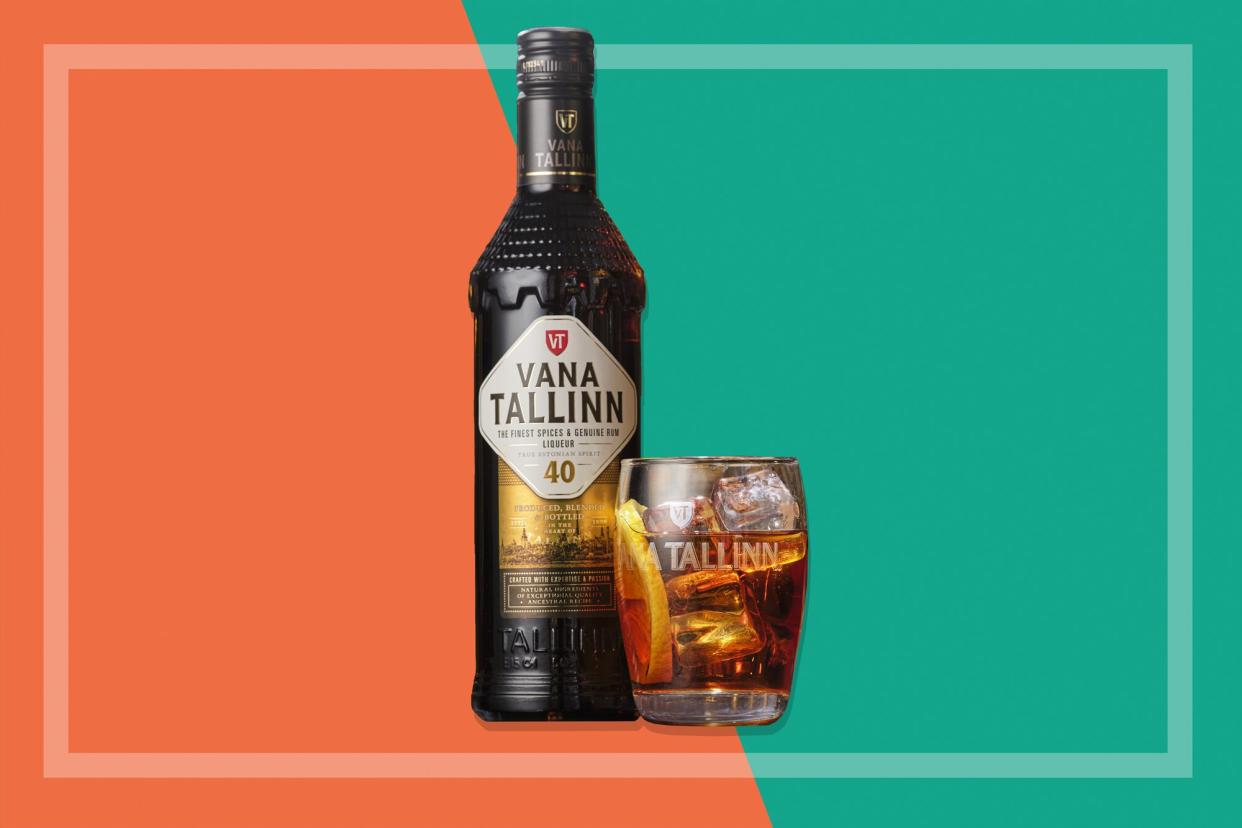Estonia's Signature Spirit Is So Popular It Was Used As Currency

Courtesy of Vana Tallinn
The ruble may have been the official currency of the Soviet Union, but for off-the-books transactions throughout the bloc, any number of desirable items could serve as tender. A favorite among these underground "currencies" were bottles of Vana Tallinn-a silky, aromatic liqueur with notes of vanilla, citrus, and warm spices.
First produced in 1960 in Estonia's capital city of Tallinn, Vana Tallinn was the result of unlikely ingenuity. The Soviets were 20 years into what would be a 48-year occupation, and Liviko, the state's premier distillery, was known for its vodka production. Innovation during Soviet rule happened behind closed doors and often with limited resources.
Vana Tallinn quietly came to light in September of 1960 thanks to Liviko's master distiller, an enterprising woman named Ilse Maar. Bored with the too-sweet, berry-forward liqueurs of the time, Maar and two colleagues, Bernhard Jürno and Jaan Siimo, decided to create something new and distinct-a spirit with rich flavors inspired by far-off lands.Or, at least, this is loosely what happened.
"History was not as appreciated in the Soviet times as it is today," says Jörgen Herman, Export Director at Liviko. "A lot of documents and data were destroyed or simply disappeared. We don't know exactly when the Vana Tallinn recipe was created, we just know that the first batch was produced in 1960."
Legend has it that the inventive trio convened in a café after work for discreet brainstorming outside of distillery walls. While the exact recipe remains a closely guarded secret to this day, the ingredients desired by Maar and her collaborators were not easy to come by in the Soviet Union.
"The recipe is really quite special when you consider the time at which it was created," says Herman. "In the context of both the Soviet Union and 60 years ago, to have something coming from Madagascar and something coming from the Caribbean and so on-some of these ingredients were quite rare."
Though records are spotty as to when the rum and herbs and spices for Vana Tallinn arrived in Estonia, Maar once shared in an interview that Jamaican rum was "actually the last thing we decided to add," lending further mystery to the recipe's development. Could the backbone of the liqueur really have been an afterthought?
Sent from Moscow, a "plan for new products" allegedly arrived in Tallinn around the same time that Vana Tallinn came to fruition. Whether a result of coincidence or careful orchestration is perhaps anyone's guess; but then again, life in the Soviet Union was all about connections.
"Companies were state-owned. If you have good contacts and the company is well-run and creates something useful for the Soviet system-maybe for the party members personally-you could basically get anything," Herman explains. "If there was a need for rum in Estonia and someone in the top political party said, 'Listen, Liviko needs rum to produce Vana Tallinn,' they could get it."
Fuzzy origin story notwithstanding, Vana Tallinn was an instant hit. Estonians delighted in the velvety mouthfeel and spicy combination of smooth, sweet, and pleasantly bitter sensations. Usually served neat alongside coffee or tea, the liqueur was low-fuss, and, at 45% ABV in its original version, offered a nice bang for one's metaphorical buck.
As word of Vana Tallinn spread throughout the Soviet Union-and later, to nearby allied and neutral countries-demand surged. While its popularity can partially be attributed to a limited selection of spirits, the delicious taste was no doubt a factor.
Claims have been made that only bananas were a more sought-after commodity than Vana Tallinn in its earliest days, which is how the liqueur became such a valuable bargaining chip. According to Herman, it still holds up if you're in a tight spot today. "In post-Soviet countries, older people know it-Vana Tallinn is a kind of currency. For a bottle of Vana Tallinn, you can still get yourself help if you have a problem."
By all accounts, Vana Tallinn (which simply means Old Tallinn) has stood the test of time. Estonia regained independence in 1991, but even after its days as a popular currency, Vana Tallinn remains very desirable. Finland, Estonia's neighbor to the north, claims the top spot for exports-Finnish people love the spirit so much that when celebrating 100 years of independence in 2017, a special Dark Liquorice edition of Vana Tallinn was chosen as Finland's centenary drink.
Liviko now exports Vana Tallinn to 38 countries, including the United States since 2010. The drink's dark, textured bottle represents the medieval towers of Tallinn's remarkably well-preserved old town, and though the glass and labels have seen many renditions through the years, one thing that hasn't changed about Vana Tallinn is its recipe.
"We don't do anything with the recipe, we can't change it," says Herman. "It's all-natural with no preservatives; it's really something special."
Tradition aside, product evolution is a necessary component of business. The current Vana Tallinn product line includes 40%, 45%, and 50% ABV versions of the original, as well as special flavors like Wild Spices, Toffee Caramel, Coffee Fusion, and cream liqueurs.
In addition to flavor blends, the distillery has been working on Vana Tallinn-based cocktails to appeal to a wider variety of beverage enthusiasts. In the end, though, less is more when it comes to Vana Tallinn.
"It's not a volume product, like a gin and tonic. You're probably just going to have a glass or two," says Herman.
His favorite way to enjoy Vana Tallinn?
"On ice with a slice of lemon. It's perfect."
